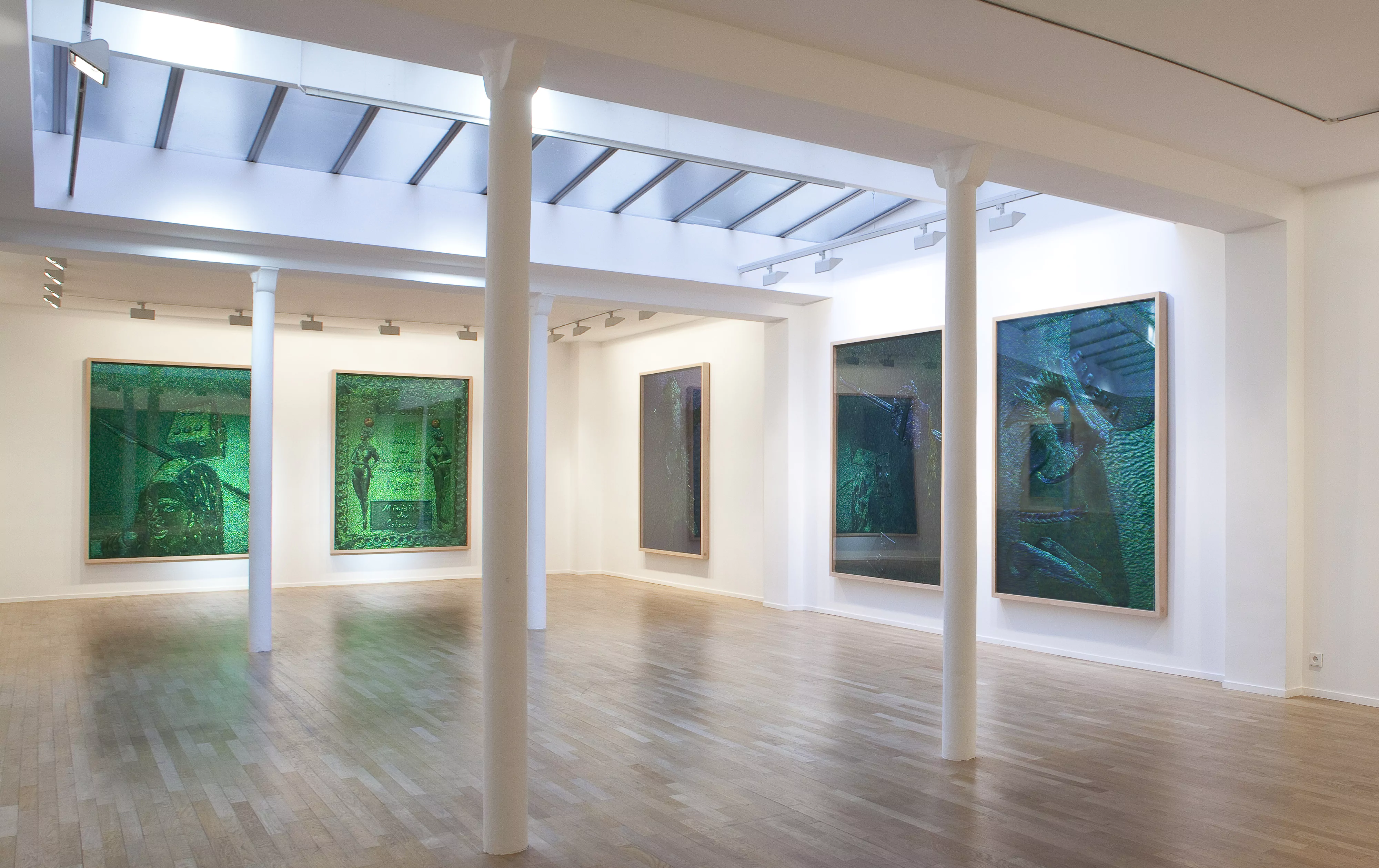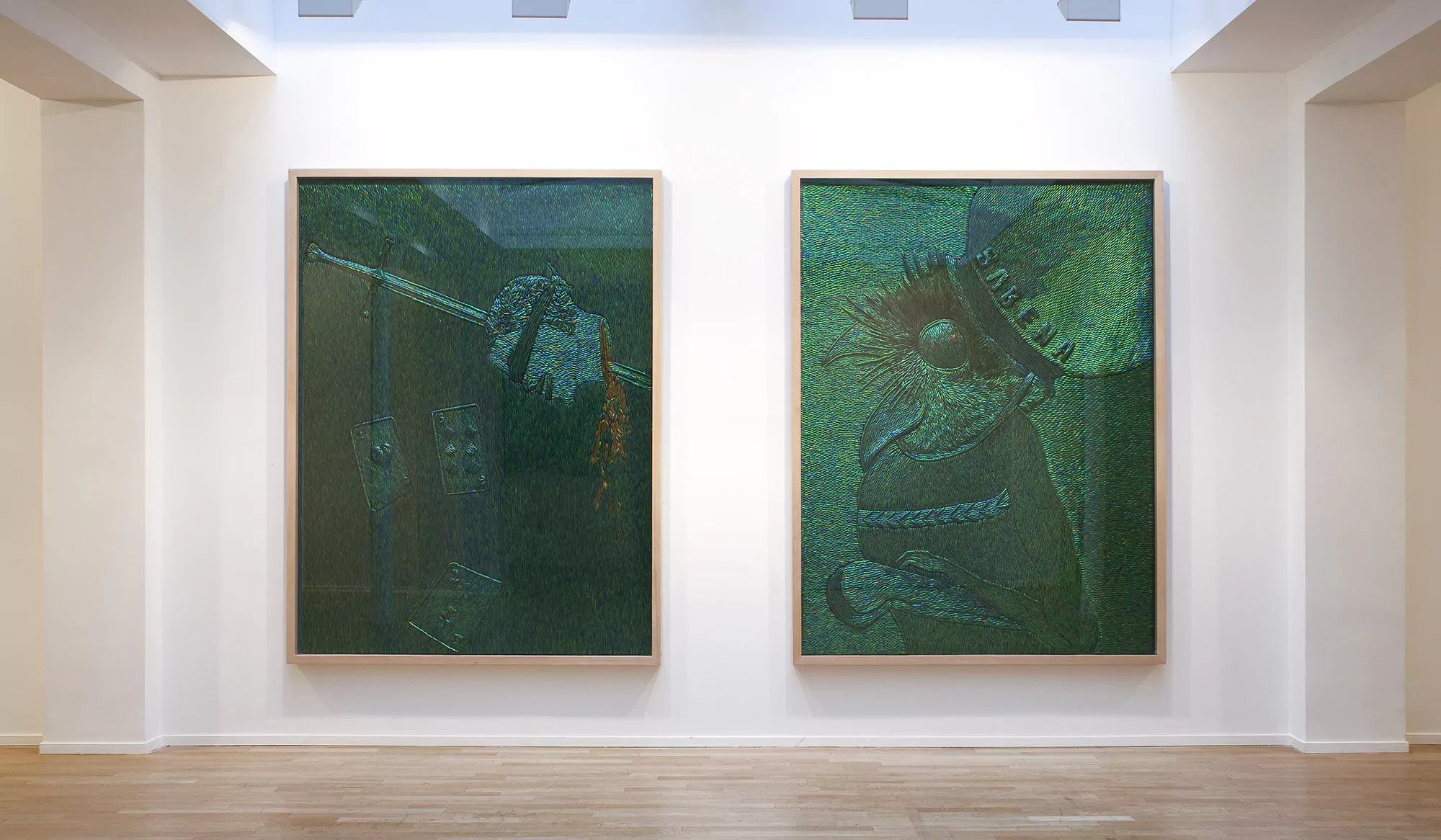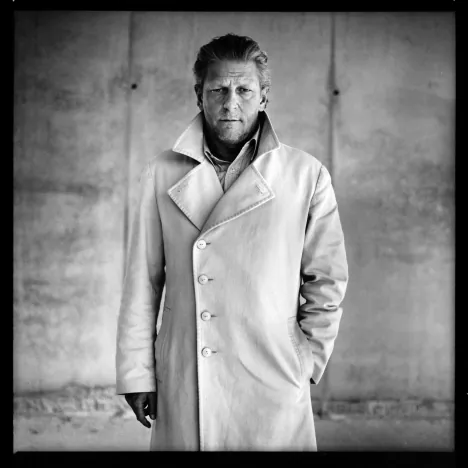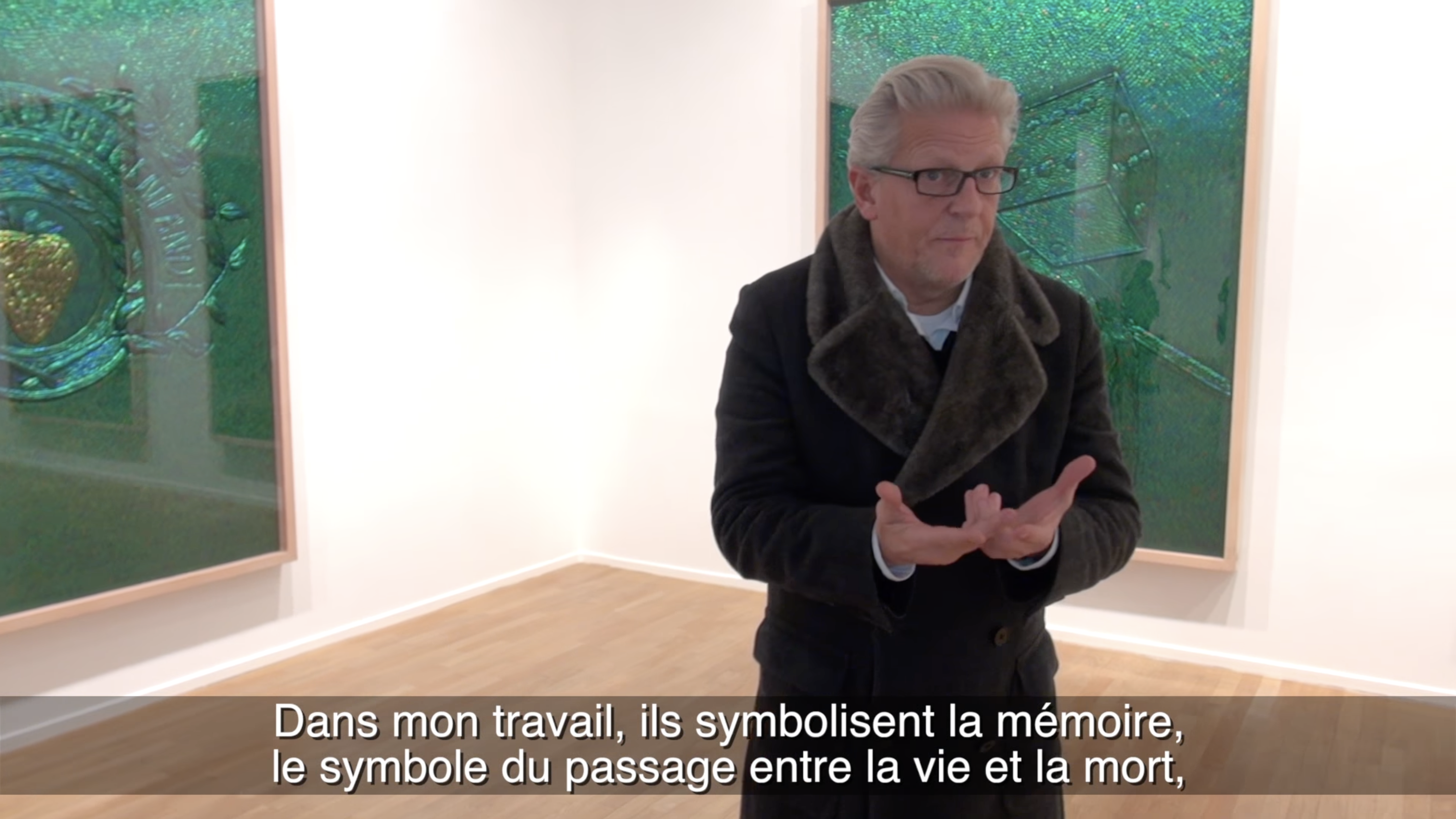
Jan Fabre
Hommage à Jérôme Bosch au Congo
Jan Fabre is showing – for the first time in Paris – a set of mosaics from two series: Hommage au Congo belge and Hommage à Jérôme Bosch au Congo, fruits of an artistic process that ran from 2010 to 2013.
In 2010, the fiftieth anniversary of Congolese independence, Fabre decided to turn his focus to his country’s colonial past. Using his materials of predilection, beetle wing sheathes – or elytra – Fabre has embarked on a new chapter of his journey as an artist.
The large beetle works display what Ekhard Schneider has described as ‘appalling plasticity’. The iridescent material offers a constantly changing vision that embraces every graduation, from shadow to light. With it, Fabre creates reliefs that echo the impasto techniques used by painters.
Viewing from a greater distance reveals a specific iconography: late 19th century Belgian Congo and the visions of Dutch painter Hieronymus Bosch (1450-1516).
Jan Fabre offers a critical portrait using propaganda images of a Congo ‘made in Belgium’, a place annexed both physically and visually. He conjures for us the symbols and protagonists: the politicians (Leopold 2, Baudouin I), religious dignitaries and exploited victims. He also summons his predecessor Hieronymus Bosch — Fabre is fascinated by his superlative creativity and the power of his images. He draws inspiration from scenes depicted in the Garden of Earthly Delights, reinterpreting them as allegories of injustice, cruelty and indifference. With his magnificent mosaics, Jan Fabre creates ‘a sweeping epic of terror within beauty (…) saturated with stories from History,’ (Schneider).

The artist

Jan Fabre was born in 1958 in Antwerp where he lives and works. He has worked in the theatre and is an internationally renowned choreographer. Over the last twenty years he has also developed a body of art work based on a variety of materials, including blood, ball-point pen ink, beetle wings, bones, stuffed animals and marble. Jan Fabre is an inveterate draughtsman, creating sculptures and installations that explore topics such as metamorphosis, the dialogue between art and science, humankind’s relationship to nature and the artist as a warrior of beauty.

